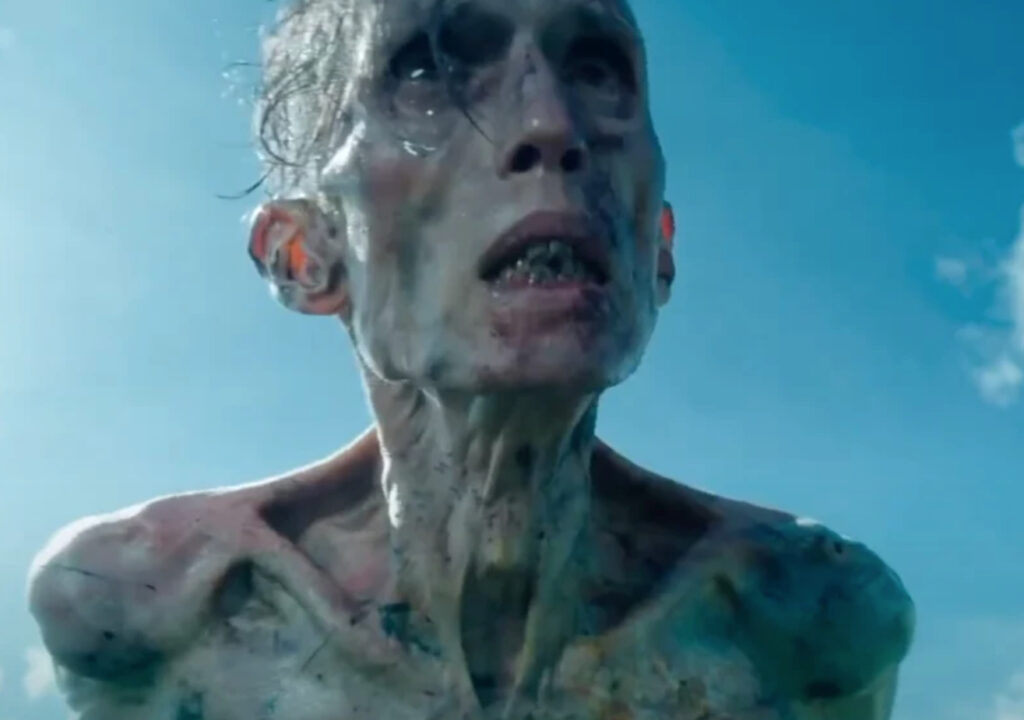In the dark annals of British horror cinema, few films have left as deep a wound as 28 Days Later (2002), the nerve-shattering infection thriller that revitalized the zombie genre with raw urgency, bleak realism, and thematic intelligence. Directed by Danny Boyle and written by Alex Garland, the film’s shaky-cam aesthetic and socio-political edge carved a new template for apocalyptic storytelling. Its spiritual follow-up, 28 Weeks Later (2007), expanded the scale but departed from Boyle and Garland’s direct creative involvement.
Now, nearly three decades after the initial outbreak of the rage virus, the original visionaries return to the chaos they birthed with 28 Years Later — a new, dread-soaked entry that promises not only to complete the trilogy but to reimagine its world entirely. With Boyle again at the helm and Garland penning a screenplay that fuses biological terror with philosophical despair, 28 Years Later is shaping up to be one of the most anticipated horror films of the decade.
Revisiting the Outbreak: A Franchise Built on Fear and Reflection
From the moment Cillian Murphy’s Jim stumbled out of a hospital into an empty London in 2002, 28 Days Later made it clear this wasn’t traditional zombie fare. The infected were not undead; they were fast, furious, and terrifyingly human. The virus didn’t reanimate corpses — it amplified rage. And the real horror wasn’t always the infected, but the humans who survived.
That core theme continues in 28 Years Later, where the rage virus has long since reshaped what remains of civilization. This third chapter exists not as a nostalgic return, but as an evolution. It asks: What does a society look like not immediately after collapse, but after decades of infection, survival, isolation, and adaptation?
The answer, as rendered through Boyle’s kinetic lens and Garland’s psychological storytelling, is grim, mutated, and mesmerizing.
The Setting: Isolation, Quarantine, and False Safety
The premise of 28 Years Later finds a group of survivors on a remote island, connected to the British mainland by a single causeway — a narrow, heavily fortified lifeline that separates them from the infected lands beyond. Life on the island is harsh but structured, governed by routine, rationing, and reinforced denial. The rage virus may still rage on the mainland, but here, life goes on in stasis.
That is, until one survivor decides to leave.
Tasked with a covert mission — one that has been kept vague in early press material — the protagonist crosses the causeway and reenters the mainland, plunging back into a world where nature, humanity, and the infected have all evolved in grotesque and surprising ways.
What follows is a journey of terror, transformation, and revelation, where nothing is as it was — and no one is who they seem.
Themes: Mutation, Memory, and Moral Collapse
At its core, 28 Years Later is about mutation — not only of the virus, but of culture, morality, and even identity.
Garland, known for his cerebral scripts (Ex Machina, Annihilation), uses the post-viral landscape as a metaphor for how trauma calcifies. The characters who survived the original outbreak — or were born into its ruins — are not just hardened by experience, they are shaped by myth, misinformation, and adaptive cruelty.
Infected creatures, too, are no longer mindless vessels of rage. In early footage teased during CinemaCon, one infected individual was shown pausing — hesitating — before attacking, suggesting neurological degradation or something more horrifying: awareness. Whether this is an evolution of the virus or a fluke remains to be seen, but it signals a departure from the purely feral violence of earlier entries.
Meanwhile, the film explores generational contrast. Those who remember the old world live with a kind of mourning, while younger survivors — raised in isolation — see infection not as tragedy but as nature. Some even worship it.
This shift underscores Garland’s interest in belief systems and how humans construct meaning amid chaos. In 28 Years Later, survivors cling to ritual, propaganda, and cultish ideologies to navigate a world where biology and morality have equally broken down.
Boyle’s Direction: A Return to Grit
Danny Boyle’s return is not just a creative reunion — it’s a reassertion of tone. The director’s signature kinetic style, handheld camera work, and dissonant soundscapes are once again on full display.
Where 28 Days Later used grainy DV footage and minimalist dread, 28 Years Later goes widescreen and panoramic — but not for beauty. The new cinematography frames ruined cityscapes with operatic despair: collapsed highways overgrown with ivy, motionless streets lit by firelight, and abandoned military zones buzzing with static.
The horror, Boyle has emphasized, isn’t in jump scares but in recognition. A haunting scene set in a repurposed cathedral-turned-commune calls back to the sanctuary in the first film. But here, the clergy are gone. The pews are filled with half-feral children, and the altar holds not a cross, but a map covered in blood-red markers. The iconography is familiar, the function unrecognizable.
Casting & Performances
While casting details remain tightly under wraps, several names have been whispered in early reports, including the return of 28 Days Later star Naomie Harris as Selena. Whether she reprises her role or appears in another form is unclear, but fans are eager for emotional continuity.
Newcomers rumored to appear include:
- Damson Idris, potentially playing the island emissary whose mission drives the plot.
- Jessie Buckley, cast as a hardened survivalist whose family has adapted to life among the infected.
- Ciarán Hinds, possibly portraying a former scientist whose research into rage has taken a twisted turn.
With Boyle at the helm, performances are expected to carry a documentary-like intensity. Expect long takes, minimal exposition, and actors asked to inhabit their roles rather than perform them.
Music & Atmosphere
John Murphy, who composed the haunting scores for the first two films, returns with an updated version of “In the House, In a Heartbeat” — the piece that underscored Jim’s rampage in 28 Days Later. In this film, it plays over a quiet montage of infected figures lying dormant in the rain, as if dead — until one opens its eyes.
The soundtrack blends analog synths with distorted field recordings, creating an atmosphere of both urgency and disassociation. The audio design draws attention to silence — howling winds through broken glass, insect chirps in long-abandoned suburbs — punctuated by visceral, bone-cracking violence when horror erupts.
Anticipation, Influence & Industry Impression
28 Years Later isn’t just a horror film. It’s a statement. At a time when post-apocalyptic stories are abundant — from The Last of Us to Dune: Messiah — Boyle and Garland are reminding audiences what this genre can do when grounded in humanity, ideology, and visceral realism.
Its release will almost certainly spark discourse on:
- Biopolitics and the ethical boundaries of containment
- The cyclical nature of fear and control
- Ecological revenge and viral evolution
- Survivalism vs. civilization
- Intergenerational trauma and adaptation
The film’s release is set for October 2025, with previews hitting major festivals in Venice and Toronto beforehand. Expect viral marketing campaigns, cryptic teasers, and possibly even AR integrations through social platforms that simulate infection zones or offer limited character POV missions.
Final Thoughts: Why 28 Still Matters
28 Years Later isn’t just a sequel — it’s a reckoning. It returns to a world shaped by rage, yes, but also by grief, adaptation, and the stubbornness of life. Where 28 Days Later introduced infection as metaphor, and 28 Weeks Later expanded its geopolitical scope, 28 Years Later questions what kind of world — and what kind of people — remain when the outbreak never truly ends.
With Boyle’s immersive direction and Garland’s philosophical bite, this third entry will likely do more than terrify audiences. It will challenge them, unsettle them, and leave them wondering not just what it means to survive, but what it means to still be human.
In the world of 28 Years Later, the real contagion may no longer be rage — but memory.
No comments yet.







